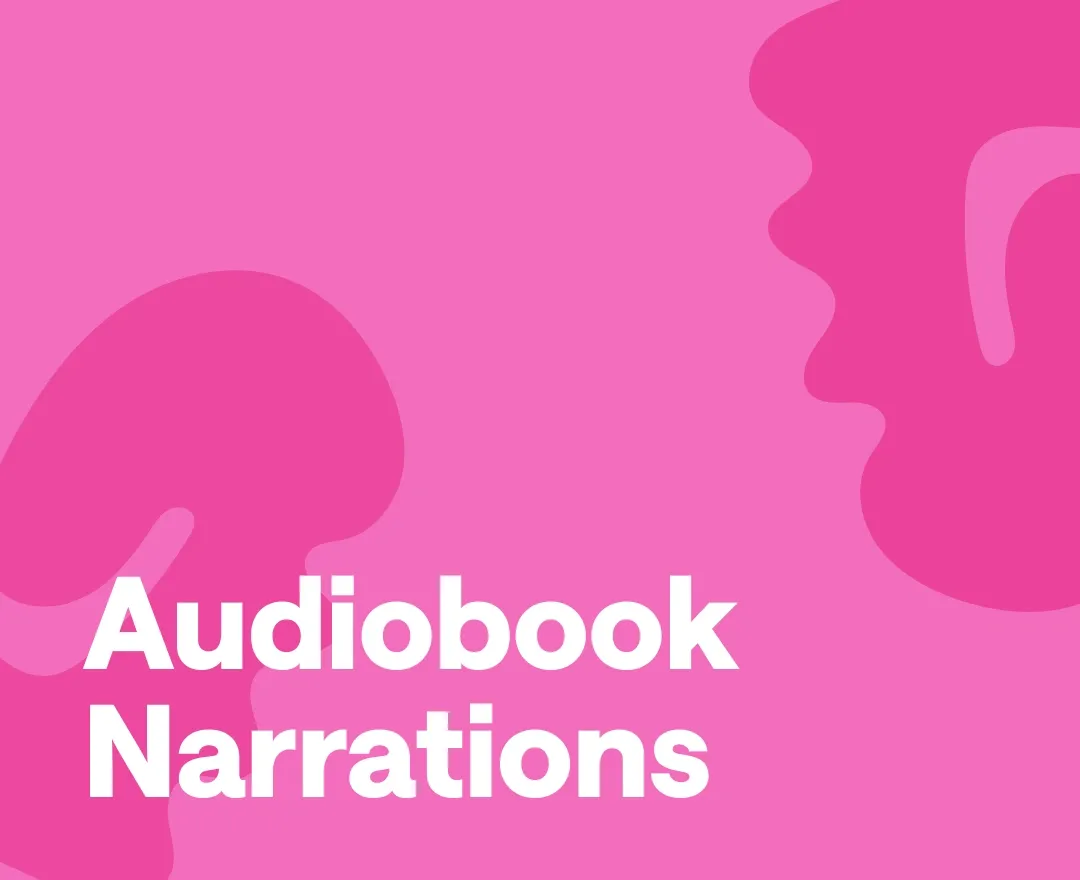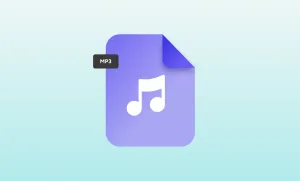There’s a world inside every book, and some voices have the power to pull listeners right into it.
When Stephen Fry reads a story, it feels like you are sitting in an old armchair by a fireplace, losing track of time. When Morgan Freeman speaks, even the air seems to slow down and listen. That kind of voice stays with you.
If you have ever thought about telling stories out loud, there has never been a better time to try. You do not need a recording studio or a big publisher behind you. With a quiet room, a decent mic, and a few smart tools powered by AI, you can start turning words into something people will want to hear.
Here's everything you should know about becoming an audiobook narrator.
What It Takes to Become an Audiobook Narrator
Thinking about how to become an audiobook narrator? Good news: you do not need a fancy home studio or a movie-trailer voice to get started. What you do need is a mix of storytelling skills, vocal control, and a little bit of patience. Let’s break down what the job is really about and what makes some narrators stand out from the crowd.
What Does an Audiobook Narrator Actually Do?
At first glance, it sounds simple: you just narrate audiobooks, right? But there is a lot more happening behind the scenes. A good audiobook narrator does more than just read words off a page: they bring the story to life. That means giving each character a voice, capturing the emotional tone of the scene, and keeping listeners hooked for hours at a time.
Skills Every Audiobook Narrator Needs
If you want to master audiobook voice-over, you will need more than a good microphone. Here are a few must-have skills:
- Consistency: Your voice needs to sound the same across long recording sessions. Nobody wants the narrator's voice suddenly getting sleepy halfway through Chapter 7.
- Stamina: Reading out loud for hours is no joke. It takes a surprising amount of energy (and a lot of tea).
- Acting Skills: You are not just reading; you are performing. Even nonfiction books need a little emotion to keep listeners engaged.
- Clear Narration: Every word should sound clean and crisp without being robotic. Think storytelling, not spelling bee.
- Good Pacing: Rushing through a novel makes it feel boring and flat. A natural rhythm keeps the audience leaning in, not tuning out.
Working on these skills early will make a huge difference once you start audiobook recording for real.
What Makes a Good Narrator Stand Out?
With so many voices, what makes a listener think, Wow, this narrator is amazing? It comes down to a few things:
- Authenticity: Listeners can spot a fake smile through audio. Be natural, be real, and connect with the material.
- Adaptability: Different books need different vibes. You might be narrating a moody thriller one week and a hilarious memoir the next.
- Attention to Detail: A truly great narrator catches small things — like when a character switches accents halfway through a conversation — and makes sure the performance stays consistent.
- Emotional Intelligence: You need to feel the story and reflect it in your voice without overdoing it. Subtlety wins here.
If you can master these, you will not just narrate audiobooks: you will turn them into experiences people will want to binge-listen to.
The Bottom Line
Learning how to become an audiobook narrator is not about having a perfect voice. It is about practicing your craft, understanding the material, and creating an experience the listener will not forget.
How to Start Your Audiobook Narration Career: Step-by-Step
Ready to dive into voice-over narration and start building your career? It can feel a little overwhelming at first, but don’t worry: it’s honestly a lot like any creative gig. You start where you are, work with what you have, and build up from there. Here is the real-world roadmap to kick things off.
Step 1: Build a Killer Portfolio
Before you even think about applying for jobs, you need something to show people you can actually do voice acting. Start by recording a few samples — short clips where you read different types of material.
Mix it up! Narrate a scene from a novel, a nonfiction passage, and maybe a bit of dialogue to show your range. This helps clients know exactly what they are getting when they hire you. Bonus points if you organize your samples into a clean, easy-to-share link (a simple website or a free portfolio site will do).
Step 2: Get Comfortable Recording Yourself
There’s no way around it: if you want to work in recording an audiobook, you have to get used to hearing your own voice and comfortable recording yourself. Start practicing at home with whatever setup you have — even a basic USB mic and free recording software is enough to get started.
Focus on getting clean audio without a lot of background noise. Find a quiet spot, warm up your voice, and pretend you are already recording for a real client. You’ll get better (and less self-conscious) every time you hit "record."
Step 3: Learn the Basics of Audio Editing
No one expects you to become a full-blown sound engineer overnight, but basic editing is non-negotiable if you are serious about voice-over narration. You need to know how to cut out mistakes, adjust volume levels, and clean up any weird background sounds.
Learning basic editing is way less scary than it sounds. You do not need a fancy studio setup or a degree in sound engineering: just some free editing software and a little patience. A few quick trims, volume tweaks, and background noise cleanups can take your recording from "rough draft" to "ready for the spotlight" in no time.
Step 4: Choose the Right Audiobook File Format
When you’re done recording an audiobook, you cannot just send someone a random MP3 and hope for the best. Different platforms have specific requirements for the audiobook file format: usually high-quality MP3s or WAV files with very specific bitrate settings.
Take five minutes to read the guidelines for any platform you want to work with (Audible, ACX, Findaway Voices, etc.). Trust me, submitting the wrong file format is the kind of mistake that makes you look like a total newbie.
Step 5: Start Finding Gigs
Once you have your samples and your basic editing skills locked down, it’s time to get out there. Start small: freelancer platforms like Upwork, Fiverr, and Voices.com are great places to book your first few projects.
Pro tip: do not undersell yourself too much just to land gigs. Reasonable, fair pricing + a polished sample portfolio will get you way better clients in the long run.
Also, make a habit of auditioning regularly. Even if you do not land every project, the practice of pitching yourself and recording auditions is hugely valuable for sharpening your skills.
Step 6: Keep Practicing (Even When You’re Not Getting Paid)
Here's the thing nobody tells you about voice acting: practice matters way more than gear. The more you read out loud, experiment with characters, and work on your delivery, the better you get.
Even if you are not landing paid gigs yet, you can still practice by narrating books you love, recording yourself reading articles, or even collaborating with indie authors who need free help. Every single minute you spend behind the mic is an investment in your future as a narrator.
And when the real opportunities come knocking? You’ll be more than ready.
How to Make Audiobook Recordings with Podcastle
You could deliver the most breathtaking audiobook narration ever, but if your sound quality is bad, listeners will drop off fast. People expect professional-level audio even from independent narrators today. Static, background noise, inconsistent volume:these small things break immersion, and once your listener is distracted, it’s hard to pull them back in.
Good news: you do not need a thousand-dollar microphone or a fancy recording studio to fix this. You just need the right tools.
How Podcastle’s Audio Editor Helps You Sound Like a Pro
Podcastle’s Audio Editor is designed for creators who want studio-quality sound without the learning curve. After you finish recording an audiobook, you can upload your raw audio file into Podcastle and clean it up easily.
You can remove background noise, adjust volume levels, trim awkward pauses, and even smooth out your overall delivery: all with just a few clicks. The editor automatically detects and suggests improvements, but if you want more control, you can fine-tune everything manually too.
What makes it even better? The interface is clean and intuitive. You are not stuck navigating tools designed for music producers or podcasters with complicated, unnecessary features.
Exporting Your Files in the Right Audiobook Format
Another major win: Podcastle helps you export your polished recording in the correct audiobook file format.
If you have ever tried uploading an audiobook somewhere like Audible, you know they have strict requirements — things like specific file types, bitrates, and sample rates. Podcastle simplifies all of that. When you are ready to export, just choose the appropriate settings, and you will have files that meet industry standards without any second-guessing.
This saves you hours (and a lot of frustration) when it’s time to submit your final audiobook.
Meet Podcastle’s AI Voice Generator
Sometimes you might want to test out your script before doing a full recording. Or maybe you have a short piece you need narrated but you are already booked solid.
That’s where Podcastle’s AI voice generator comes in. You can upload your script, select a voice that fits the tone you want, and generate a natural-sounding audiobook voice over almost instantly.
While nothing beats the emotional nuance of a real human narrator (that’s you!), having an AI option can save time for smaller projects or rough drafts. Think of it as a tool in your toolbox, not a replacement.
Give Your Audiobook the Finish It Deserves
If you are serious about voice over narration, it is not enough to just deliver a great performance. You have to match it with professional-sounding audio too.
Polished, clean recordings keep your listeners focused on the story — exactly where you want them. And with tools like Podcastle, getting to that level has never been easier.
You’ve put the work into mastering your voice. Now it’s time to make sure your recordings sound just as good.








